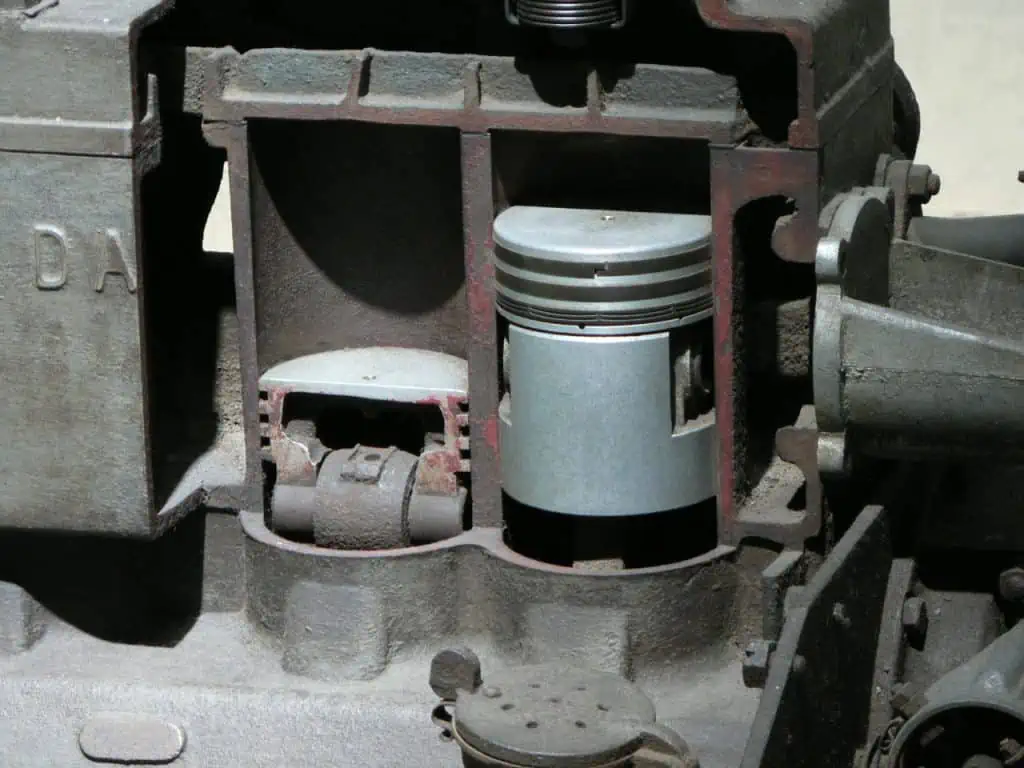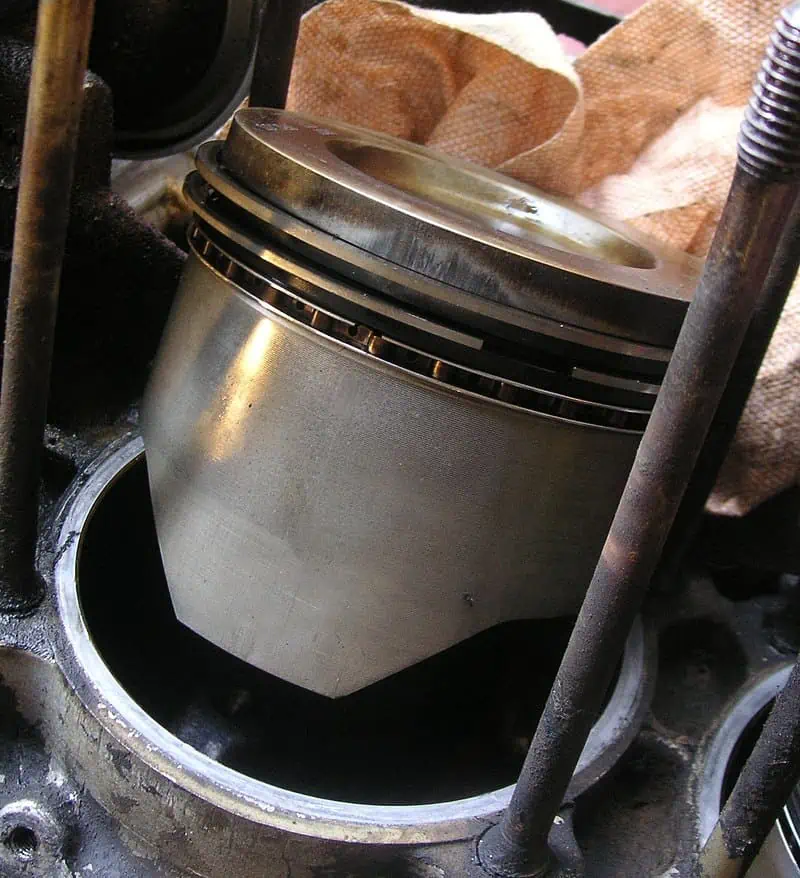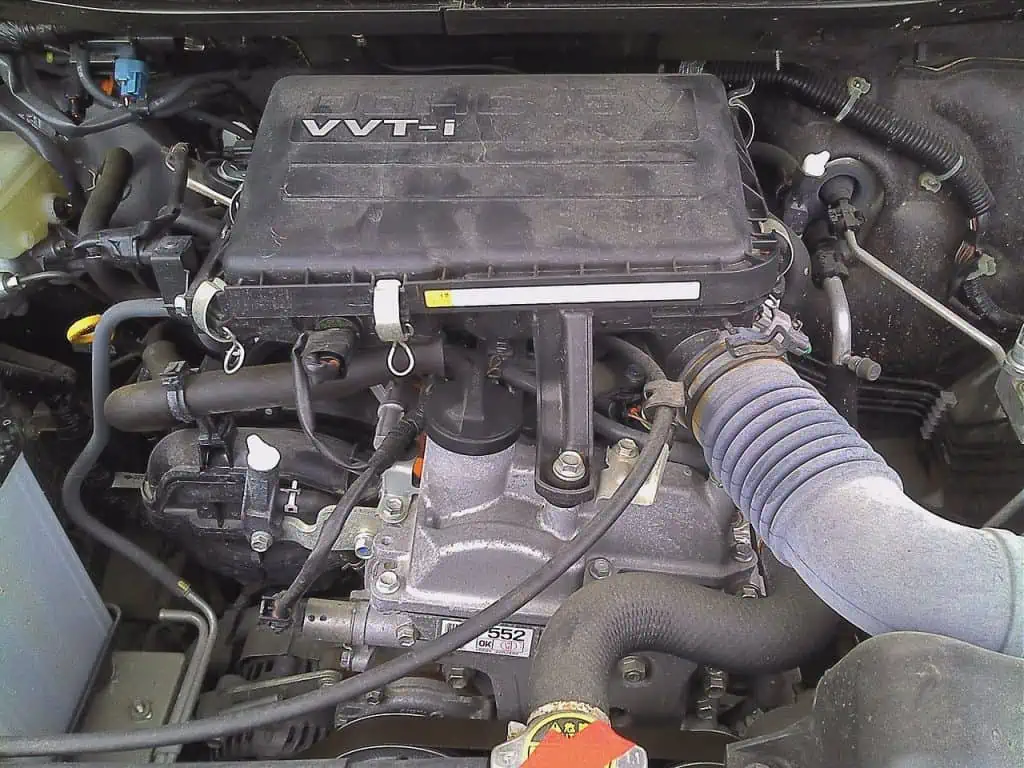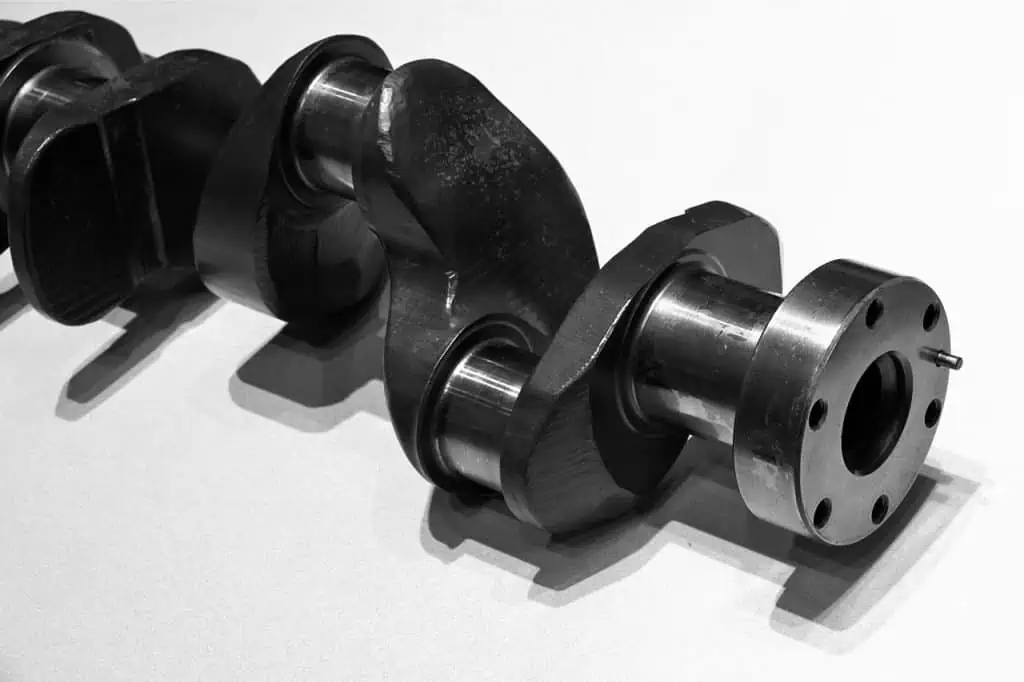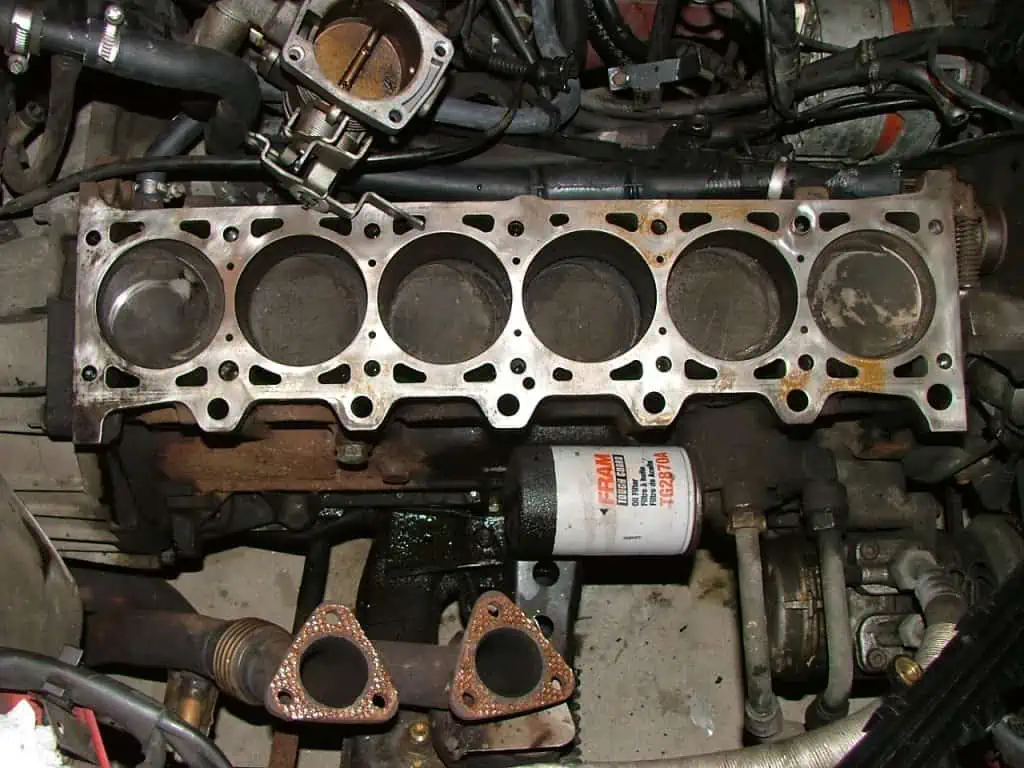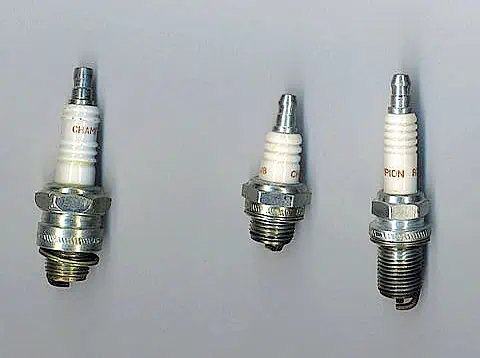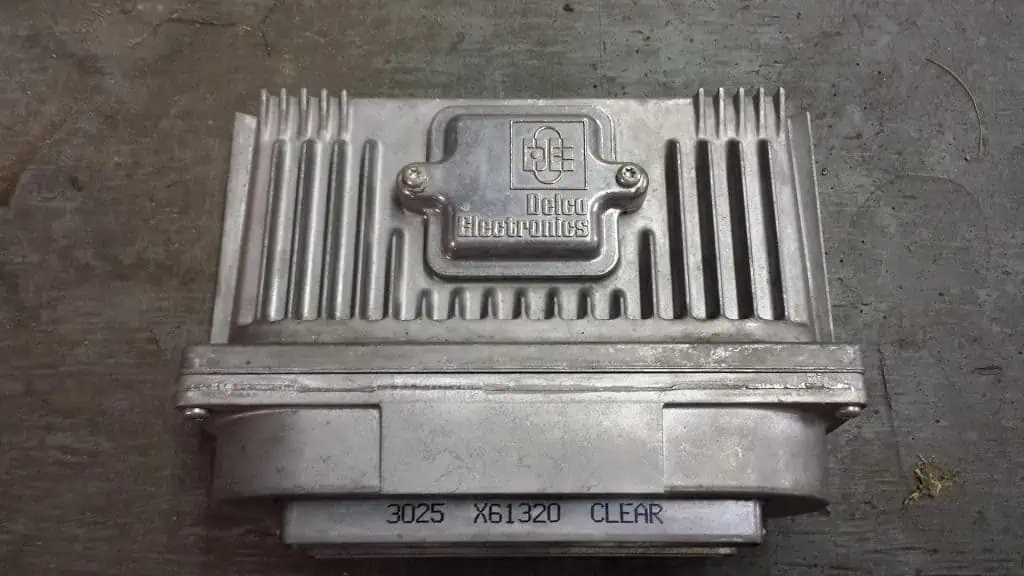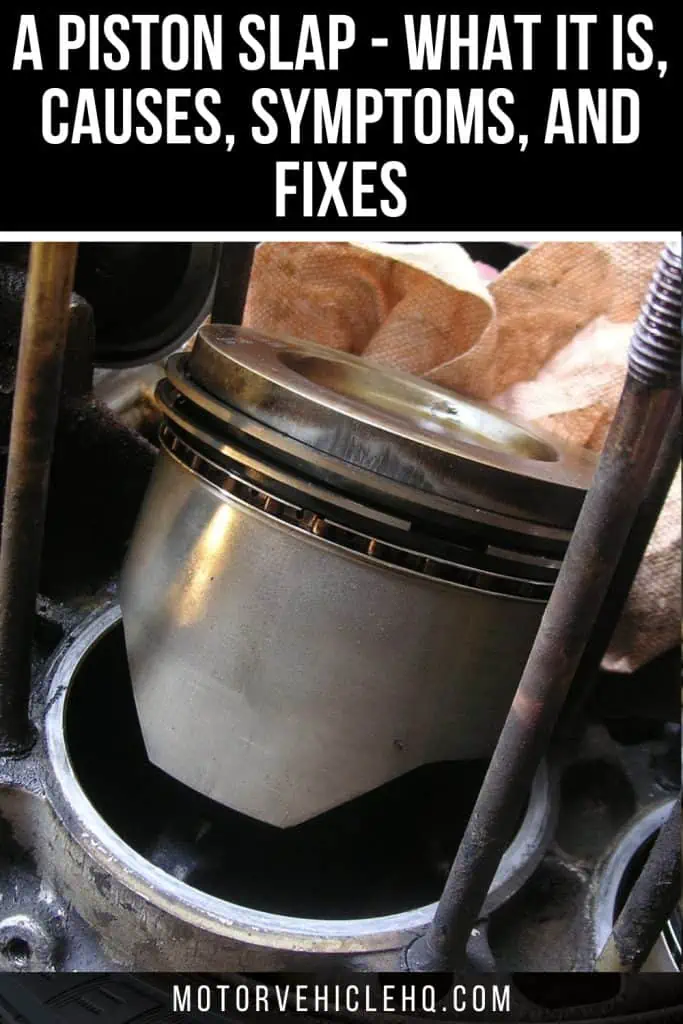Have you ever heard a rattling or knocking noise coming from your car? This can indicate that your piston is breaking down. In all likelihood, if you drive a modern vehicle, you won’t feel a piston slap. This is because newer autos include a diagnostic system. A piston slap could happen if your vehicle is older.
What functions does the diagnostic tool have? Motion sensors in contemporary automobiles control the air-fuel ratio. These sensors are employed by the computer system to aid with problem detection. What occurs then when your piston fails?
You’ll hear rattling or knocking, misfiring, lose power, and start to smell burnt oil. You might also observe that your check engine light is on. You should have this problem examined as soon as you can.
A high clearance between the two results in the piston slapping when it bumps into the cylinder wall. The noise is best described as sounding like your gasoline engine abruptly switched to diesel.
A piston slap is generally a sign of engine wear and tear, and it should be taken seriously. But if it’s bad enough, it might eventually harm the engine. So, just to be cautious, it’s preferable to have it examined by a specialist.
An Auto Piston: What Is It?
You must first comprehend what a piston is to grasp the piston slap. It is a thick metal plate or disk that fits within the cylinder of your engine. The rod that joins the pistons to the crankshaft is attached to them.
The crankshaft is moved up and down by the piston, and the crankshaft’s motion is subsequently transmitted to your wheels via a driveshaft. We need to discuss the operation of an internal combustion engine in your car to comprehend what a piston is for and how it functions.
Pistons within a sectioned petrol engine by 160SX / CC BY-SA 3.0. A piston slap is typically an indication of engine deterioration and needs to be addressed seriously. But if it persists long enough, the engine can eventually suffer damage. Therefore, it is best to have it inspected by an expert just to be safe.
What Is the Function of Pistons?
You might be asking why pistons are used. Inside the engine block, a piston is a cylinder that moves up and down. How does this motion happen?
Inside the combustion chamber, a mixture of air and fuel will erupt, moving the piston up and down as a result. Additionally, a wrist pin is attached to the piston. This has connections to more engine components.
How many chambers do the majority of automobiles have? Most automobiles have four, six, or eight chambers. Up to 12 chambers can be found in some of the newer, quicker automobiles. Even though automobiles have numerous chambers, only one chamber can support combustion.
The combustion chambers generate a lot of heat. Because the pistons are light, they may move more easily.
These days, they are frequently made of an aluminum alloy that makes it easier for them to move up and down the cylinder. Cast iron was once the primary material used to make pistons. This substance was chosen because it could withstand the added heat.
The pistons and piston rings are part of this mechanism. Compression ring seals are employed to fill the gap left by the piston and cylinder’s imperfect fit. Smoke will begin to release as these rings begin to fail if they are allowed to deteriorate over time.
The oil ring is another component of this apparatus. This component combines two rings. It is employed to clean the cylinder wall of extra oil. This is crucial to prevent oil buildup inside the engine.
Oil will start to leak into the combustion chamber if these rings start to wear out. Future difficulties could result from this in a very severe way. To prevent total engine damage, you should make sure to get this fixed as soon as you can.
The Working of an Internal Combustion Engine
Internal combustion engines or ICEs for short in the present day are four-stroke engines. This indicates that each cycle has four stages: intake, compression, power, and exhaust.
Your engine will use the intake valve to draw gasoline and air into the cylinder during the initial phase. The piston will descend at this point to induce suction inside the cylinder.
The cylinder will then start its compression stroke. The fuel and air mixture will now be compressed as the piston moves higher, preparing it for combustion, which will start the power stroke. The fuel and air mixture will explode under control at the power stroke.
If you have a gasoline engine, a spark plug helps the combustion process. The explosion is started by a little electric spark that the spark plug’s tip produces. While a diesel engine produces combustion without the aid of a spark plug by merely utilizing the high compression it possesses.
The explosion that results from the fuel and air mixture ignited forces the piston downward once more. The power stroke is so named because this will cause the crankshaft that drives your car to turn as a result.
Your piston will then raise once more to force the burned gas out through the exhaust valve. After that, the procedure starts over with the intake stroke.
Spring-loaded piston rings by Interiot~commonswiki / CC BY-SA 2.0. The engine mechanism includes the pistons and piston rings. To close the gap caused by the ill-fitting piston and cylinder, compression ring seals are used. If you let these rings deteriorate over time, smoke will start to leak as they start to disintegrate.
A Piston Slap: What Is It?
Okay, so now that you are familiar with how an engine operates, it will be simpler for you to comprehend what a piston slap is and why it occurs. There is very little space between the pistons and the cylinder walls because the pistons in your car fit into the cylinder quite tightly.
This is acceptable because the side-to-side movements required by pistons to move up and down are minimal. This also aids in preventing the escape of the fuel and air combination.
Due to heat and friction, the piston and cylinder wall may deteriorate over time. There will be increased space between the piston and the cylinder wall as they deteriorate. The piston will then start to rock in the cylinder, causing the skirt (the cylindrical piston wall) to slap the engine’s cylinder wall.
The engine will then start to rattle or knock as a result of this. Typically, this occurs when the engine is running at idle or during overrun (when you let off the throttle and the engine’s RPM drops).
Some engines, especially those with aluminum pistons or cylinder blocks, are more prone to piston slap. Because aluminum is lighter than iron, it is frequently utilized in some performance cars to save weight.
Additionally, it does a better job of transmitting heat to the coolant, which keeps the engine from overheating. Aluminum engines are more prone to piston slap since they aren’t as sturdy as cast iron, which is heavier but more resilient.
A Piston Slap: How Does It Happen?
A piston slap is caused by two causes. The pistons have more room in their bores when the engine is cold, which causes them to knock against the sides. Second, when an engine is cold, incorrectly sized pistons or rings cause the pistons and rings to knock and scrape against one another.
This is essentially a manufacturing error, as the pistons should be large enough to never knock against the sidewalls but remain narrow enough to fit in the bores even after heating up.
Knocking is a sign that the piston utilized by the makers was too tiny for your bores. It can be typical for your car, depending on how old it is.
If your automobile has more than 30,000 miles on it and you purchased it used, it is probably old. It’s a manufacturing issue that you should have fixed if your car has less than 30,000 miles on it and you purchased it less than six years ago.
What are the Symptoms of a Piston Slap?
Other than a banging sound emanating from your engine, there are no other signs of piston slap. It is unlikely that you will experience a decrease in performance or bad fuel economy. You will rarely suffer a piston slap if your car is quite contemporary.
This is due to the ECU module, or Engine Control Unit, that is now standard in current cars. To ensure that the engine can function smoothly, the ECU makes several adjustments to the engine using several sensors.
For instance, the engine will adjust by injecting extra fuel to make up for a lack of oxygen so that it can continue to run. The engine will run just fine for a time, but the air intake issue will still need to be fixed.
A typical car engine by Yones / CC BY-SA 3.0. Two things can cause a piston to slap. When the engine is cold, the pistons have more space in their bores, which causes them to bang against the sidewalls. Incorrectly proportioned pistons or rings also cause the pistons and rings to knock and scrape against one another when an engine is cold.
A knock sensor is one of these sensors; it functions almost like an ear for the ECU, listening for unusual noises and vibrations originating from your engine.
The engine’s ignition timing will then be modified by the ECU to get rid of the uneven knock. Later, we’ll cover the potential causes of engine knocks in greater detail.
When something is unusual, the ECU will also send a signal to the check engine light to turn it on. This implies that it will alert you to an issue so you can address it before the piston slaps ever happen.
How Does a Piston Slap Sound Like?
Disassembling your engine and examining the condition of your pistons is the only method to confirm that you have a piston slap. We don’t advise doing this unless the knocking sounds are accompanied by other symptoms because it will take a lot of time and money.
For instance, piston slaps may be the reason for a timing belt that has broken. But in most cases, this is due to aging or a seizure related to a water pump. Additionally, if the timing belt in the car is older than ten years, it should already be replaced.
There is nothing else you can do to confirm a piston slap besides taking the engine apart and personally inspecting the pistons.
Is a Piston Slap a Serious Car Problem?
A piston slap can seriously damage your engine if you permit it to continue for too long. The problem will become more obvious the longer you delay addressing it.
Your piston clearance and cylinder walls will keep rising. Additionally, if your pistons are made of aluminum, revving a cold engine can hurt them.
You might be asking why this happens because of aluminum pistons. The reason for this is that the aluminum pistons have not yet been able to retain enough heat to take on the necessary shape.
They will ratchet against the cylinders of the motor block if this occurs. You must wait until your engine is warm before revving it to fix this issue.
Due to the loud noises your engine makes, a piston slap can be highly embarrassing. Can you picture taking a coworker to work in a car that suddenly starts to rattle and smoke?
If you experience a piston slap, this will take place. As soon as you hear noises coming from your engine, you should always have a mechanic examine your vehicle.
Your engine will suffer more harm the longer you wait. Because repairing a completely damaged engine in a car is highly expensive, you want to keep your engine in good condition.
How Can I Diagnose Piston Slap?
Often, if you have failed pistons, your check engine light will come on. This will activate to let you know that there is a problem with your car. An error code will be present if the vehicle has a diagnostic system.
You can identify the source of the problem with the aid of this error code. The misfiring cylinder will be identified by the error code. A damaged sensor may occasionally result in a misleading readout.
A typical engine crankshaft by Alex Kovach / CC BY 2.0. The piston raises and lowers the crankshaft, and a driveshaft then transfers the motion of the crankshaft to the wheels. To understand what a piston is for and how it works, we must first go through how an internal combustion engine in your car runs.
These sensors are essential for informing the system whether or not there is a problem. The diagnostic system will be alerted by the sensors, and that system will then switch on the engine light.
Why do misfires happen? There are a variety of reasons why this might occur. Poor spark plugs, unclean fuel injectors, bad ignition coils, and bad spark wires are a few of these causes. It’s crucial to understand that those components won’t result in the piston slapping.
However, the exhaust system will create blue smoke as a result of those components. If this blue smoke is formed, it could be harmful to the atmosphere as well as to human health. There are often toxic chemicals in this smoke.
1. Timing Belt Snapping
What is a timing belt, exactly? Every car needs a timing belt, which is a vital component. It assists in fine-tuning the motion of the valves and pistons. So, what occurs if the belt breaks might be on your mind.
In either case, the pistons and valves will collide. For the health of your engine system, avoid this. You must have this issue rectified as soon as possible because it will lead to other engine problems.
2. Worn-Out Piston Rings
Nearly every component of your engine system experiences wears and tear over time. If the piston rings have gone a long time without being changed or maintained properly, they will eventually begin to wear down. When this occurs, air will move between the cylinder and the piston’s spaces.
Additionally, the oil will begin to seep into these areas and descend to the firing chamber. This is quite bad if it happens. The vehicle will emit white smoke and consume a significant amount of engine oil.
If you continue to ignore this, your engine system will suffer damage. Oil in locations where it shouldn’t be is hazardous. If you spot a problem with your car’s engine, always have it serviced.
3. Damaged Piston
To try to prevent faulty car parts and repairs, it is crucial to make sure you maintain your car properly. The piston will begin to develop holes if your fuel injections take in too much dirt.
The material will deteriorate and develop holes due to the dirt. Whether you open up your engine, you can see if there is a problem.
Your system won’t function properly if you discover holes in your piston, and the piston slap could happen. This issue needs to be rectified right away.
How Can a Piston Slap Be Repaired?
As already said, piston slaps don’t necessarily indicate a problem. But when you see further signs, such as smoke coming from the exhaust, it’s time to fix your engine.
Your only true choice at this stage is to rebuild the engine. The engine must be disassembled, all worn-out and broken components must be replaced with new ones, and the engine must then be rebuilt.
Rebuilding an engine is expensive. To save on expenses, you can get away with replacing a small number of parts.
The engine cylinder heads by Kether83 / CC BY 2.5. Some engines are more prone to piston slap, particularly those with aluminum cylinder blocks or pistons. Aluminum is widely used in some performance cars to save weight because it is lighter than iron.
For instance, if you simply need to replace the piston rings, it will only cost you about $200 for a set, and for other automobiles, it will be even less. However, this will still set you back $1,000 to $2,000 due to the labor costs.
An engine’s disassembly and rebuilding require a lengthy, difficult process that often takes 10 hours to complete.
Because of this, we advise that you perform a complete rebuild and replace all necessary parts at the same time. Your engine will operate flawlessly with this.
Since engine rebuilds in some cars can cost as much as $4,500, this isn’t an option for everyone. You would be better off selling your automobile and using the proceeds to purchase a new vehicle if this wasn’t an option.
The fact that the car is officially damaged means you will have to sell it for less money. But at least you’ll have money in your hands after this.
To save money, we don’t advise anyone who isn’t a certified professional technician to perform an engine rebuild themselves.
Rebuilding the Engine
You must determine whether an engine rebuild is necessary before proceeding and whether it would be preferable for you to simply sell the vehicle.
We advise selling your car as-is if the rebuild’s price isn’t too far off its market value. We do, however, have some advice if it’s still worthwhile or if you still want to maintain your car for nostalgic reasons.
The first step is to compare prices so you can acquire the best one. However, since this is an expensive and highly invasive repair, it’s also crucial to have a reputable car repair business handle it for you.
For you to be certain that the repair business won’t charge you for something you don’t need, do as follows.
Reminding the mechanic to get in touch with you before replacing or repairing an item that wasn’t included in the first estimate or quote is also a smart idea.
You can then give your approval or disapproval of the work they are about to perform. Additionally, you won’t be taken aback by unspecified repair work when you receive the bill.
Finally, finding replacement parts on your own may be more cost-effective if you have a thorough understanding of engine components.
You might be able to get parts cheaper elsewhere since auto repair firms sometimes charge more for certain parts. Remember that not all auto repair shops will fix your automobile if the part is not from them.
A Piston Slap: What Causes It?
Because of the enormous piston-to-wall clearance, the piston rocks may move from one side to the other. A piston slap will result from this. Aluminum blocks are more susceptible to this issue than blocks made of other materials.
Different sizes of automotive spark plugs by Gzuckier / CC BY-SA 3.0. The combustion process is aided by a spark plug in a gasoline engine. A little electric spark produced by the spark plug’s tip ignites the explosion.
The pistons will accelerate if they have more cold clearance. As a result, the piston shifts from the minor to the major thrust side, which finally results in a piston slap.
Modern automobiles feature a specific sensor that alerts the vehicle’s ECU system to any fluctuations in the piston, which is a crucial point to remember. To prevent the car’s engine from falsely knocking, the ECU will pull ignition timing from its system.
If you don’t have this mechanism, you can alternatively modify the piston’s motion using an offset pin. What will that achieve? The piston won’t be able to strike the cylinder because of it.
How Can I Get Rid of a Piston Slap?
Replacing the pistons is the only way to stop a piston slap.
This requires disassembling your engine and replacing parts, therefore it is not inexpensive. However, if your vehicle is less than six years old, you may file a “goodwill” claim with the maker.
Don’t be scared to escalate the issue because the manufacturer will typically fix it for free since they were the ones who initially caused the issue. You can also try to fix your automobile at the dealership if it’s still under warranty, but you’ll have a tough fight on your hands.
Given that it’s such an expensive repair, dealerships frequently want to avoid dealing with you. Before entering, be aware of your warranties and procedures.
Although some claim that using thicker oil might reduce noise, the actual issue of the pistons striking the bore’s side will remain unaffected. Having said that, a heavier oil might be helpful if all you want to do is quiet the noise.
What Can I Do to Prevent a Piston Slap from Re-Occurring In The Future?
Simply said, it cannot. It’s a manufacturing error that may not show up for years. There are, however, several actions you can do to stop a piston slap.
Maintain your vehicle by scheduling regular oil changes and tire rotations. This will assist you in keeping your car free of several issues. Before driving, be careful to warm up your vehicle.
Getting over that temperature can help you avoid a piston slap because a piston slap often ends when the engine reaches that temperature.
If you’re worried about a piston slap, find out how the manufacturer and dealer have handled such situations in the past.
Good dealers and producers will correct the issue without charge. Bad ones try to get their consumers to pay for engine teardowns and towing fees by giving them the runaround.
To find out if these dealerships and manufacturers are reliable, look at what others with piston slap have to say about them.
How Much Longer Can an Engine with a Piston Slap Run?
With only a mild piston slap, some engines can reach 100,000 miles of operation. Only 30,000 to 40,000 miles will be covered by some before they need to be rebuilt.
An engine control unit (ECU) by Mgiardina09 / CC BY-SA 3.0. It’s important to keep in mind that modern cars have a special sensor that warns the ECU system of any changes in the piston. The ECU will take ignition timing from its system to stop the car’s engine from unintentionally knocking.
Typically, a piston slap does not signal an impending engine failure. However, it might result in more use of oil and perhaps worsen fuel efficiency and performance.
Can a Car Warranty Cover a Piston Slap?
Since a piston slap is seen as a wear-and-tear issue, it is typically not covered under warranty. However, it’s worth asking the dealership if they will cover the cost of repairs if your car is still covered by the manufacturer’s guarantee.
A Piston Slap vs. a Rod Knock: What Is the Difference?
It can just be a false knock if your engine is knocking. A fake knock occurs when there is no engine issue but the engine creates a knocking noise.
Some engines, like the LS1 engines in a Corvette, are vulnerable to this. Why does this frequently occur during a cold start? The cause is related to the expansion and contraction of metal.
Your car’s pistons will enlarge during a hot period and contract during a cool period. The pistons are made to be slightly smaller than the cylinder bore as a result (the diameter of the cylinder). As a result, the piston will be able to contract when heated and fit exactly in the engine’s cylinder while running.
When the piston is cold, there is more room between it and the cylinder wall. This results in the piston knocking against the cylinder walls during a cold start.
The piston will expand and fit the cylinder once the engine reaches operating temperature, removing the knock. It’s a false knock because the engine is in perfect working order and there isn’t any issue with it at all.
The Conclusion
In summary, the piston slap is a knocking sound that is produced when the pistons slam into the cylinder wall due to excessive clearance between the two parts.
A piston slap often won’t harm other parts right away, so it’s usually nothing to worry about. Additionally, it is not cost-effective to replace the pistons simply because of a piston slap because you would need to rebuild the engine.
Make sure nothing else is the cause of any engine-knocking noises you may be hearing. If the knock sensor, the ignition timing, or the rod bearings are malfunctioning. However, if you see a piston slap, you usually don’t need to be concerned until it’s accompanied by additional symptoms like blue exhaust smoke.
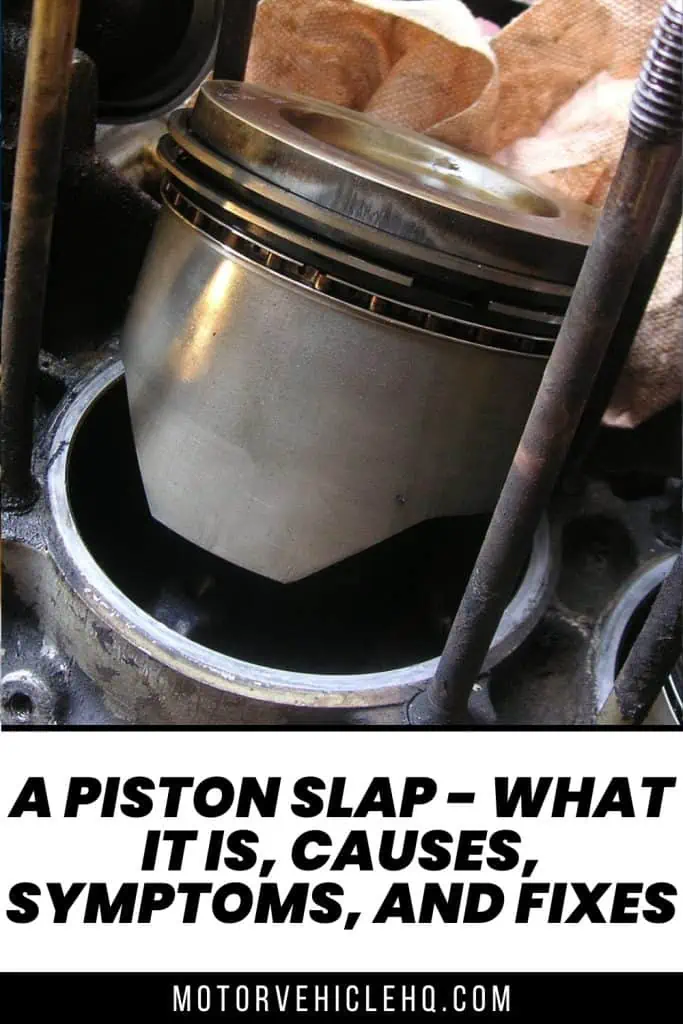
Spring-loaded piston rings by Interiot~commonswiki / CC BY-SA 2.0

Jim Wicks is the founder of MotorVehicleHQ. With over two decades of experience in the automotive industry and a degree in Automotive Technology, Jim is a certified car expert who has worked in various roles ranging from a mechanic, car dealership manager, to a racing car driver. He has owned more than 20 cars over the past 15 years. Ask him about any vehicle you see on the road and he can tell you the make, model and year. He loves the aesthetics of all things cars, and keeps his vehicles in pristine condition.
In his free time, Jim enjoys getting his hands dirty under the hood of a classic car or taking long drives along the country roads. His favorite car? A 1967 Shelby GT500, a true classic that, according to Jim, “represents the pure essence of American muscle.”
